7 Tips to Alleviate Lower Back Pain After Sleeping
Published:
Experiencing lower back pain after sleeping is a common issue that affects many individuals. In this thorough guide, we'll look into the various elements and solutions that can help reduce morning back pain and improve sleep quality.
Contents:
- Sleep Position and Lower Back Pain
- Benefits of Side Sleeping for Reducing Lower Back Pain
- Alternative Sleep Positions to Consider
- Mattress Quality and Its Impact on Back Pain
- Stretching Exercises for Morning Relief
- Managing Chronic Conditions Causing Lower Back Pain After Sleeping
- Proper Posture During Daytime Hours Affects Night-time Comfort
- Pregnancy and Lower Back Pain After Sleeping
- Addressing Specific Causes of Lower Back Pain After Sleeping
- FAQs in Relation to Lower Back Pain After Sleeping
- Conclusion
Discover the benefits of side sleeping for reducing lower back pain, as well as alternative sleep positions to consider. We'll also discuss the importance of mattress quality in providing spinal support and how it impacts your comfort during rest.
Learn about stretching exercises you can perform right from your bed to relieve discomfort, along with daily exercise routines that promote a healthier lifestyle. Furthermore, we'll explore chronic conditions causing lower back pain after sleeping and when it's necessary to seek professional help.
Additionally, understand how proper posture during daytime hours contributes to nighttime comfort and ergonomic adjustments you can make at home. For pregnant women experiencing lower back pain after sleeping, we'll provide recommendations on sleep positions and daily habits for easing pregnancy-related discomforts.
Last but not least, we will address specific causes of sudden left-side lower back pain as well as hip, groin, and leg pains related to sleep position so you can enjoy restful nights free from agony.
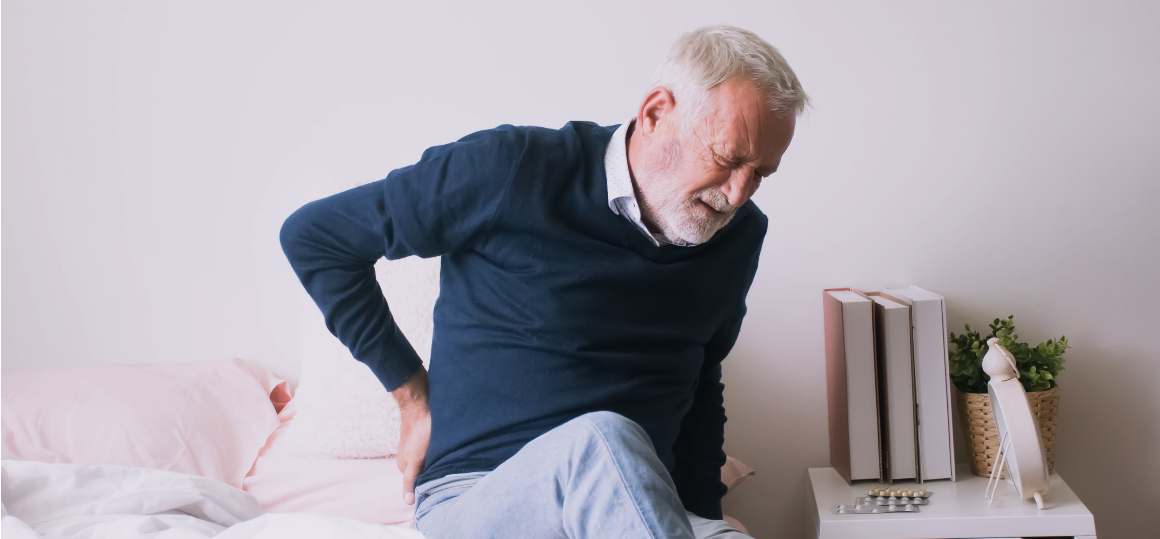
Sleep Position and Lower Back Pain
Your sleep position can significantly impact the likelihood of experiencing lower back pain after sleeping. Side sleeping may help prevent or alleviate sleep-related backaches, but if your current sleep position does not provide relief within a few weeks, it might be helpful to try another one.
Benefits of Side Sleeping for Reducing Lower Back Pain
Side sleeping is considered one of the best positions for reducing lower back pain because it helps maintain proper spinal alignment throughout the night. When you sleep on your side with a pillow between your knees, it keeps your hips aligned and prevents unnecessary strain on your spinal cord. This can lead to less tension in the surrounding back muscles, ultimately helping to reduce morning discomfort.
Alternative Sleep Positions to Consider
- Back Sleepers: Lying flat on your back allows for even weight distribution across all areas of contact with the mattress. Placing a small pillow under your knees can further support natural spine curvature and minimize pressure points that could cause discomfort during restful hours.
- Fetal Position: Curling up into a fetal position while keeping both legs bent at right angles provides additional support for those who experience lower abdomen pain alongside their low-back-pain symptoms due to conditions like sciatica or herniated discs.
- Pillow Support: Incorporating pillows strategically around different parts of the body, such as the lumbar region or beneath the neck, will ensure optimal comfort levels are maintained throughout slumber sessions, regardless of which specific posture is chosen each evening before drifting off into dreamland territory.
It may require some trial and error to discover the most relaxing sleeping posture for you as everyone's body is unique. If your back pain persists despite trying various positions, consult a healthcare professional for further guidance.
Tips for Adjusting Your Sleep Position
- Pillow Placement: Experiment with pillow placement under your head, neck, knees, or hips to provide optimal support and comfort during sleep.
- Maintain Consistency: Once you've found a comfortable position that alleviates morning back pain symptoms, try sticking with it consistently each night to promote long-term relief from discomfort upon waking up on a daily basis.
In addition to adjusting your sleep position, consider other factors such as mattress quality and incorporating stretching exercises into your routine. These can also play an essential role in reducing lower back pain after sleeping.
To sum up, sleeping in a side position can be beneficial for reducing lower back pain and discomfort. On the other hand, mattress quality is another factor to consider when looking at how to prevent or reduce existing back pain.
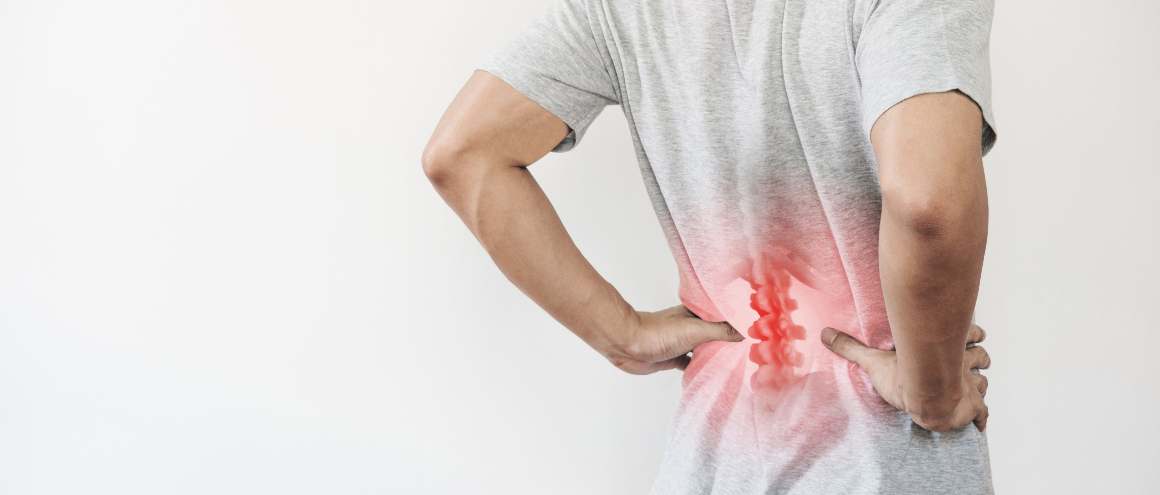
Mattress Quality and Its Impact on Back Pain
The mattress chosen can significantly influence the probability of experiencing lower back pain upon rising. Medium-firm mattresses have been shown to reduce symptoms related to this condition by nearly half compared to other types of mattresses. In this section, we will discuss how choosing the right mattress firmness for spinal support can help alleviate discomfort and explore signs that your current mattress may be contributing to your pain.
Choosing the Right Mattress Firmness for Spinal Support
Selecting a suitable mattress is crucial for maintaining proper spine alignment during sleep, which helps prevent or reduce lower back pain. A medium-firm mattress provides an optimal balance between comfort and support, allowing your body weight to be evenly distributed across its surface while still providing enough cushioning for pressure points like hips and shoulders. For side sleepers, it's essential that their mattress offers adequate contouring around these areas without causing excessive sinking or misalignment.
- Foam: Memory foam or latex foam mattresses can provide excellent pressure relief and conformability but may not offer sufficient support if they are too soft.
- Innerspring: These traditional coil-based mattresses often provide more robust support but may lack appropriate cushioning at pressure points unless paired with a quality pillow-top layer.
- Hybrid: Combining elements from both foam and innerspring designs, hybrid mattresses aim to strike a balance between comfort and support while minimizing common drawbacks associated with each material.
Signs That Your Mattress Could Be Contributing to Discomfort
If your lower back hurts after sleeping, it could be worth pondering if the mattress is to blame. Here are some signs that your mattress might need replacing:
- Age: Most mattresses have a lifespan of around 7-10 years, so if yours is older than this, it could be losing its ability to provide adequate support.
- Sagging or indentations: Over time, mattresses can develop visible sagging or body impressions that lead to uneven support and spinal misalignment during sleep.
- Persistent discomfort despite trying different sleep positions: If you've experimented with various sleep positions but still experience back pain in the morning, your mattress may not be providing the necessary support for healthy spine alignment.
To reduce lower back pain after sleeping and improve overall sleep quality, consider investing in a medium-firm mattress designed to offer proper spinal support. Additionally, regularly assess your current mattress for signs of wear or damage that could contribute to discomfort and replace it as needed.
It is important to understand the impact that mattress quality can have on your back pain, and how choosing a mattress with the right firmness for spinal support may help reduce discomfort. Stretching exercises are another way of providing relief from morning aches and pains; let's take a look at some simple stretches you can do in bed as well as incorporating daily exercise routines into your lifestyle.
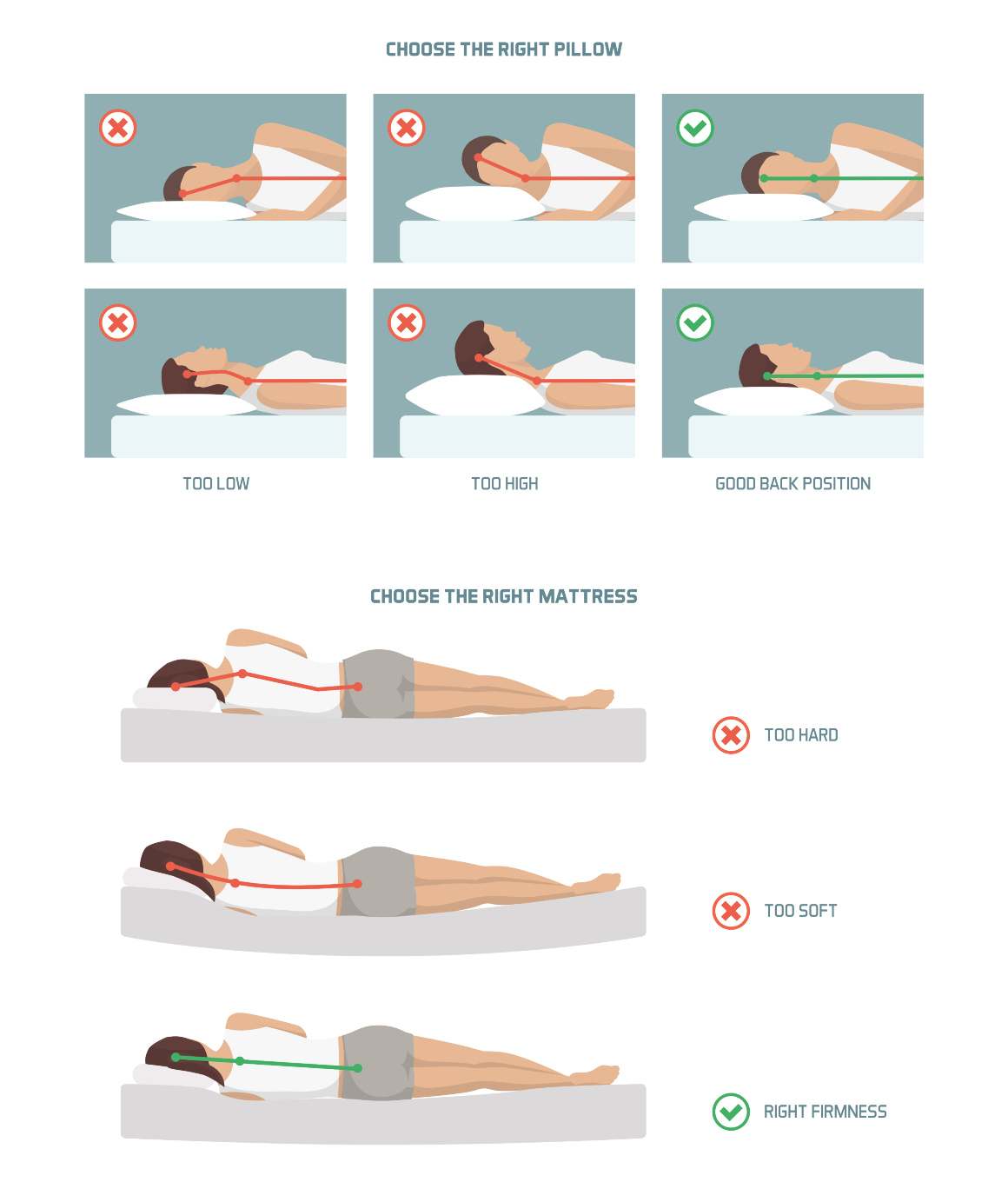
Stretching Exercises for Morning Relief
Engaging in regular stretching exercises specifically targeting the muscles surrounding the spine can offer immediate relief from tension upon waking up. Reach both arms above your head while lying down before getting out of bed each morning as an effective method for relieving post-sleep lower back pain. In this section, we will discuss simple stretches you can do in bed and how incorporating daily exercise routines into your lifestyle can help alleviate back pain.
Simple Stretches You Can Do in Bed
- Knee-to-chest stretch: Lie on your back with both legs extended. Gently pull one knee towards your chest using your hands, holding it there for about 20 seconds. Release and repeat with the other leg.
- Pelvic tilt: While lying on your back with knees bent and feet flat on the mattress, tighten your abdominal muscles to press the small of your back against the surface below you. Hold this position for a few seconds before releasing.
- Lumbar rotation stretch: With knees bent and feet flat on the mattress, slowly drop both knees to one side while keeping shoulders pressed firmly against the surface beneath them. Hold this position briefly before returning to center and repeating on the opposite side.
In addition to these stretches performed immediately after waking up, consider engaging in a consistent routine that includes activities such as yoga or Pilates, which are known to improve flexibility and strengthen core muscles supporting spinal health (source). Incorporating these practices into daily life may contribute significantly toward reducing lower back pain over time.
Incorporating Daily Exercise Routines Into Your Lifestyle
Maintaining an active lifestyle can help prevent and alleviate lower back pain. Regular physical activity strengthens the muscles that support your spine, reduces stiffness, and improves overall flexibility. Here are some tips for incorporating exercise into your daily routine:
- Start with low-impact activities: Begin by engaging in gentle exercises such as walking or swimming to build strength without straining your back.
- Incorporate core-strengthening exercises: Include workouts targeting abdominal and back muscles like planks or bridges to provide better support for your spinal cord (source).
- Avoid high-impact activities if experiencing pain: If you're currently suffering from lower back pain, avoid high-impact sports like running or jumping until symptoms subside.
- Stretch regularly throughout the day: Take breaks during work hours to stand up and stretch, focusing on areas where tension is felt most acutely.
Taking a proactive approach toward maintaining good health through regular stretching routines both upon waking up and throughout daily life can significantly reduce discomfort associated with morning lower back pain while promoting long-term well-being.
To achieve optimal relief from lower back pain, it is essential to identify and manage any underlying chronic conditions that may be contributing to the discomfort. By understanding and managing these chronic conditions, individuals can further improve their morning relief from lower back pain.
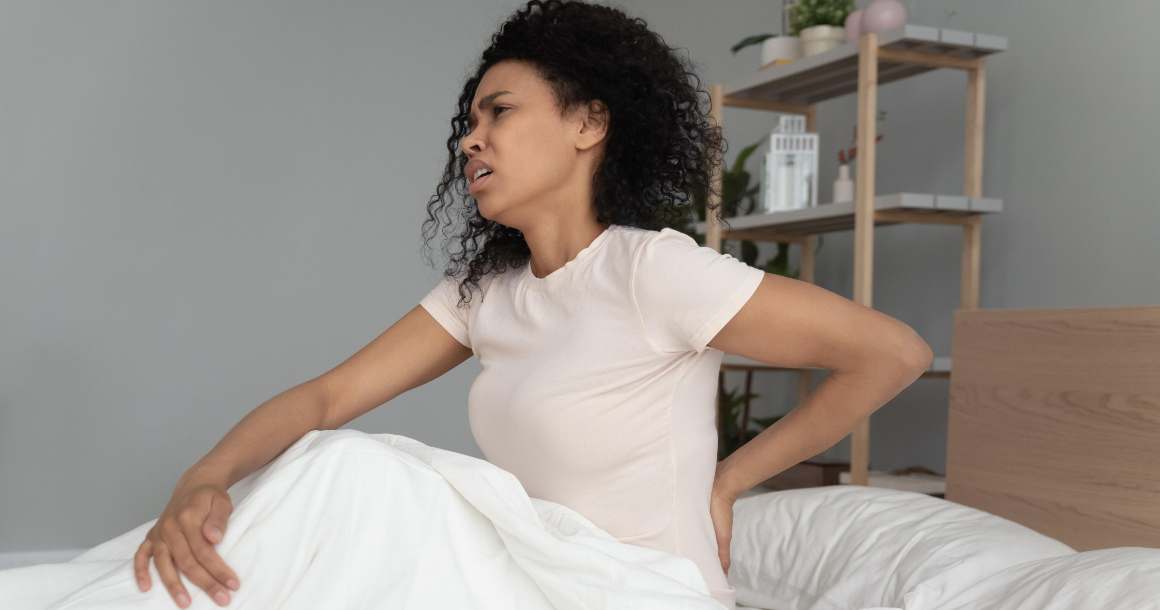
Managing Chronic Conditions Causing Lower Back Pain After Sleeping
If you suffer from chronic conditions like degenerative disc disease or fibromyalgia, managing your symptoms effectively may require medical interventions such as steroid injections and pain medications. It's essential to consult with a healthcare professional for personalized treatment recommendations, as self-care measures alone might not be enough.
Common Chronic Conditions Causing Morning Back Pain
- Degenerative Disc Disease: This condition occurs when the spinal discs gradually wear down over time, leading to increased pressure on the spinal cord and surrounding nerves.
- Fibromyalgia: A disorder characterized by widespread musculoskeletal pain accompanied by fatigue, sleep problems, and memory issues.
- Ankylosing Spondylitis: An inflammatory arthritis affecting the spine that can cause some of the vertebrae in your spine to fuse together.
- Lumbar Spinal Stenosis: The narrowing of spaces within your lower back (lumbar) region can put pressure on the nerves traveling through these areas, resulting in low back pain.
In addition to seeking appropriate treatments for these underlying conditions, it's crucial to maintain an open line of communication with your healthcare provider about any changes in symptoms or concerns related to your lower back pain after sleeping. They will be able to recommend adjustments or additional therapies based on their expertise and knowledge of your specific situation.
When Is It Time to Seek Professional Help?
If you experience persistent lower back pain that does not improve with self-care measures, such as adjusting your sleep position or using over-the-counter pain relievers, it's essential to consult a medical professional. Some signs that indicate the need for expert intervention include:
- Pain lasting longer than six weeks.
- Severe pain at night or when lying down.
- Numbness, tingling, or weakness in one or both legs.
- Pain accompanied by fever, weight loss, or other unexplained symptoms.
Your healthcare provider may refer you to a specialist who can diagnose and treat the specific cause of your morning back pain. This could involve working with a physical therapist on targeted exercises and stretches designed to alleviate discomfort related to spinal stenosis, degenerative disc disease, or other chronic conditions affecting the lower back region after sleeping.
By making small lifestyle changes, such as maintaining proper posture during the day and seeking professional help when needed, you can take steps to manage chronic conditions that may be causing lower back pain after sleeping. Furthermore, ergonomic adjustments at home and tips for better posture while working can further improve your night-time comfort.
Proper Posture During Daytime Hours Affects Night-time Comfort
Maintaining proper posture during the day is essential for preventing lower back pain after sleeping. By ensuring good posture throughout daily activities, you can significantly reduce your risk of experiencing discomfort at night. In this section, we will discuss tips for maintaining proper posture during work hours and ergonomic adjustments to make at home.
Tips for Maintaining Proper Posture During Work Hours
- Adjust your chair: Make sure that your office chair supports the natural curve of your spine and allows you to sit with both feet flat on the ground. If necessary, use a footrest or cushion to achieve this position.
- Monitor height: Position your computer monitor so that it's at eye level when looking straight ahead. This prevents strain on the neck and upper back muscles from constantly looking up or down.
- Keyboard placement: Place your keyboard directly in front of you, with enough space between it and yourself so that elbows are bent at approximately a 90-degree angle while typing. This helps prevent wrist strain and promotes better overall body alignment.
- Avoid crossing legs: Sitting with crossed legs can cause an imbalance in weight distribution across hips which may lead to lower back pain over time. Instead, keep both feet flat on the floor or resting comfortably on a footrest if needed.
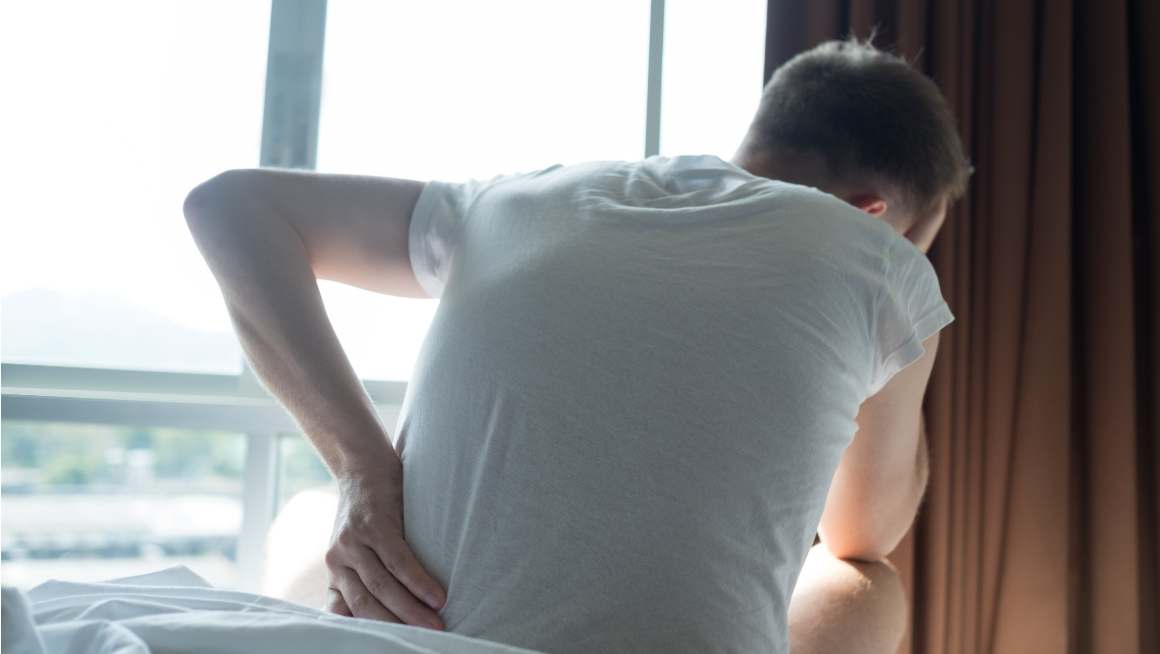
Ergonomic Adjustments to Make at Home
- Maintain correct sitting posture: The same principles of proper posture apply when sitting at home. Select a seat with adequate lumbar assistance and modify it to the suitable height for your physique.
- Use supportive pillows: When relaxing on the couch or in bed, use pillows to provide additional support for your lower back. Placing a pillow behind you can help maintain the natural curve of your spine while seated.
- Lift heavy objects correctly: When lifting heavy items, bend at the knees and keep your back straight instead of bending from the waist. This technique helps protect against strain on spinal discs and muscles.
- Incorporate regular breaks: Whether working from home or engaging in leisure activities, remember to take breaks every 30 minutes to stand up, stretch, and move around. This prevents muscle stiffness that may contribute to lower back pain after sleeping.
Maintaining proper posture during daytime hours is crucial for preventing discomfort later on in the evening. By making these simple adjustments both at work and home environments, you can significantly reduce your risk of experiencing lower back pain after sleeping.
Maintaining good posture during the day can be beneficial for reducing back pain at night, so it is essential to observe correct form while working. Pregnancy also affects a woman's sleeping position and her ability to manage lower back pain; thus, pregnant women should be aware of how their daily habits can reduce discomfort while they sleep.
Pregnancy and Lower Back Pain After Sleeping
During pregnancy, it is common for women to experience lower back pain due to the additional weight of carrying a baby. This can be exacerbated after sleeping, especially if proper sleep positions are not maintained. Fortunately, there are ways pregnant women can reduce their risk of experiencing lower back pain by adjusting their sleep position and making small lifestyle changes during the day.
Sleep Positions Recommended for Pregnant Women
The best sleep position for pregnant women is typically on their side with their knees bent. Known as the SOS (Sleep On Side) position, this posture helps maintain spinal alignment while providing support to the lower abdomen and reducing pressure on spinal discs. To further enhance comfort and alleviate strain on the back muscles:
- Place a pillow between your knees to keep hips aligned.
- Use a full-length body pillow or wedge-shaped cushion for extra support.
- Avoid lying flat on your back or stomach as these positions may restrict blood flow or cause discomfort in later stages of pregnancy.
Daily Habits That Can Ease Pregnancy-Related Back Pain
In addition to adopting appropriate sleep positions, incorporating certain daily habits can help ease pregnancy-related lower-back-pain:
- Maintain Proper Posture: Stand tall with shoulders relaxed and chest lifted; avoid slouching when sitting at work or home. Use lumbar rolls or cushions behind your lower back when seated in chairs without adequate support.
- Prenatal Exercise: Engage in prenatal exercises such as yoga, swimming, or walking to strengthen core muscles and improve flexibility. Before engaging in any exercise regimen while pregnant, always consult your doctor or healthcare provider.
- Wear Supportive Footwear: Choose shoes with low heels and good arch support to help maintain proper alignment of the spine while standing or walking.
- Lift Objects Safely: When lifting objects, bend at the knees instead of the waist; keep items close to your body when carrying them.
If you continue to experience back pain after implementing these strategies, consider consulting a healthcare professional for personalized advice on managing discomfort during pregnancy. Keep in mind that what works for one individual may not be the same for another. Stay proactive in addressing lower back pain after sleeping by experimenting with different sleep positions and daily habits until you find relief from this common pregnancy-related issue.
Pregnancy can be a difficult time for many expecting mothers, but understanding the causes of lower back pain after sleeping and making changes to sleep positions or daily habits can help alleviate some of this discomfort. With that in mind, let's look at how addressing specific causes may also provide relief from lower back pain.
Addressing Specific Causes of Lower Back Pain After Sleeping
Understanding specific causes such as sudden left-side pain, hip/groin/leg pain after walking around or bending forward/backward is essential in finding targeted solutions. Consider seeking advice from qualified medical professionals who specialize in treating this condition if self-care measures do not improve your situation within a few weeks' time frame.
Sudden Left-Side Lower Back Pain and Potential Reasons
Sudden pain in the left lower back that goes away after sleeping can be caused by various factors, including muscle strain, kidney issues, or sciatica. Muscle strains are common when engaging in physical activities without proper warm-up or overexertion. Kidney problems may cause localized pain on one side of the lower back due to inflammation or infection. Sciatic nerve irritation can also result in sharp shooting pains down the leg originating from the lower back region.
To address these potential causes:
- Maintain good posture during daily activities to reduce strain on muscles and spinal discs.
- Stay hydrated and maintain a balanced diet for optimal kidney health.
- Incorporate stretching exercises targeting the hamstrings and glutes to alleviate sciatic nerve pressure.
Hip, Groin, and Leg Pains Related to Sleep Position
Pain experienced in the hips, groin area, or legs after walking around might be related to improper sleep position causing undue stress on joints and muscles. Side sleepers with poor alignment between their spine and pelvis may experience discomfort radiating into their hips while those sleeping on their stomachs could suffer from lumbar radiculopathy or sciatic nerve irritation.
To address these issues, consider the following:
- Switch to a more supportive sleep position such as side sleeping with knees bent and a pillow between your legs for proper spinal alignment.
- Use an ergonomic pillow designed for specific sleep positions to maintain neck and spine alignment during rest.
- Incorporate daily stretching exercises targeting hip flexors, glutes, and hamstrings to improve flexibility and reduce tension in affected areas.
If self-care measures are not successful in providing relief, consulting a musculoskeletal specialist should be considered. They can help identify underlying causes of pain after sleeping and recommend appropriate treatment options such as physical therapy or pain relievers if necessary. Remember that addressing the root cause of lower back pain is crucial for long-term relief and prevention of future discomforts associated with poor sleep habits.
FAQs in Relation to Lower Back Pain After Sleeping
Why Does My Lower Back Hurt in the Morning After Sleeping?
If you experience lower back pain in the morning, it could be due to poor sleep position, an unsupportive mattress, or underlying chronic conditions. Maintaining proper posture during the day and incorporating stretching exercises can help alleviate discomfort.
Why Does My Lower Back Hurt After Sleeping Wrong?
Sleeping in a bad position can cause misalignment of your spine and strain on muscles, leading to lower back pain. To prevent this, try adopting side-sleeping with a pillow between your knees or using other alternative sleep positions.
How Do I Stop My Lower Back from Hurting After Sleeping?
To stop your lower back from hurting after sleeping:
- Select a supportive mattress that maintains spinal alignment
- Avoid stomach-sleeping and adopt better sleep positions
- Maintain proper posture throughout the day
- Incorporate daily stretches for flexibility and strength
- Treat any underlying chronic conditions causing pain
Why Does My Back Hurt After Sleeping Too Much?
If you've slept too much, your back might hurt because staying immobile for extended periods can lead to muscle stiffness. Incorporating regular movement into your routine by taking breaks during long sleeps or practicing gentle stretches before bedtime can help reduce discomfort.
Conclusion
In conclusion, lower back pain after sleeping can be caused by a variety of factors including sleep position, mattress quality, chronic conditions, posture during the day, and pregnancy. To reduce discomfort and improve overall spinal health, it is important to consider alternative sleep positions such as side sleeping or investing in a mattress with proper firmness for spinal support. Incorporating daily stretching exercises and maintaining proper posture during work hours can also help alleviate morning back pain.
If you are experiencing chronic or severe lower back pain after sleeping, it may be time to seek professional help from a healthcare provider. Additionally, if you are pregnant, there are specific sleep positions and habits that can ease pregnancy-related back pain.













